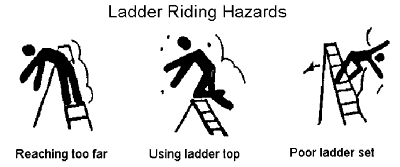BEFORE USING HAND
TOOLS
WHEN USING HAND TOOLS
WORKING FROM LADDERS

Publication #: 8831-E
This document is apart of a series from the College of Agriculture, the University of Arizona, Florida Cooperative Extension Service, Tucson, AZ 85719. Publication date: May 1989.
Lance Fluegel, Safety Coordinator, and Bradley Rein, Engineering Specialist, the College of Agriculture, University of Arizona, Tucson AZ 85719.
Disclaimer and Reproduction Information: Information in NASD does not represent NIOSH policy. Information included in NASD appears by permission of the author and/or copyright holder. More